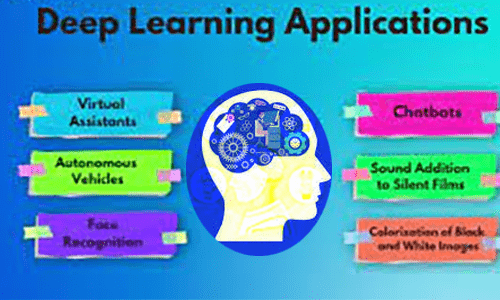Why Is Deep Learning Important?
Ever wonder how your phone can arrange photos
in your gallery according to where they are located, or how Google can
translate a whole webpage into a different language in a matter of seconds?
Deep learning is the technology that makes it all possible. However, precisely
what is deep learning?
Is deep learning defined?
Within machine learning, which is a subset of artificial intelligence,
lies deep learning. A method called artificial intelligence makes it possible
for machines to mimic human behavior. In contrast, machine learning is a method
for creating artificial intelligence that makes use of data-trained algorithms.
Lastly, a subset of machine learning called deep learning is motivated by the
architecture of the human brain. This structure is known as an artificial
neural network in the language of deep learning.
Though they are not quite the same, artificial intelligence, machine learning, and deep learning are sometimes combined into one category.
Visualizing these ideas as they change throughout time is the greatest method
to comprehend how they relate to one another.
Conversely, artificial intelligence can be implemented through machine
learning. The method stands for the capacity to learn without the need for
explicit programming.
Deep learning and machine learning
An algorithm can be trained to complete a task without explicit
programming through the use of machine learning. The algorithm will ingest a
lot of data throughout this training, and it will progressively adapt and get
better as a result.
Let's pretend that we build a system that can tell the difference
between tomatoes and cherries in order to better grasp deep learning and how it
differs from machine learning. In the event that machine learning is used, we
would need to give it the distinctive features, such the size and kind of
stimulation. Deep learning, on the other hand, selects the features
automatically by the neural network without the need for human input. But,
there is a price for this autonomy—in this example, the machine needs a lot of
data to be trained.
One method for putting machine learning into practice is deep learning. This new method attempts to imitate human logical reasoning and perception processes by drawing inspiration from the human brain.
How neural networks work ?
Now let's discuss neural network operation. Envision three pupils
penning the digit eight on a sheet of paper. They will not sketch it in the
same manner. These numbers are easily recognized by the human brain, but how
does a computer interpret them? This is the role of deep learning. The
recognition of handwritten numerals is taught into a neural network. For a
total of 784 pixels, each digit is represented as an image with 28 by 28
pixels. The neurons, the main components of the network, process the
information.
In the first layer of the network, the 784 pixels provide information to each neuron. Weighted connections are used to move data from one layer to the next. The weighted total of inputs is increased by the unique number assigned to each neuron as a bias. The neuron's activity state is then ascertained by an activation function. Subsequent levels, up to the output layer, where each neuron represents a number, receive input from activated neurons.
Application of deep learning
Deep learning finds use in numerous domains. It is utilized in customer service, when virtual representatives converse with clients in a way that makes it seem natural for them to be speaking with a robot. It is also utilized in medicine to evaluate MRI pictures and find cancerous cells.
The limits of deep learning
Deep learning does have several drawbacks, though, such as the necessity
for large amounts of data for training, the amount of processing power needed,
and the length of time needed to build deep neural networks.
Reasoning and abstraction are currently artificial intelligence's
biggest issues. Algorithms for perception and reinforcement learning need an
enormous amount of data. Consequently, these algorithms are only capable of
basic pattern identification due to their incapacity to organize their
activities.
Notwithstanding these obstacles, deep learning and artificial
intelligence have a bright future ahead of them, one that will allow for far
more possibilities than we can now envision.
In summary, deep learning is a potent technology that has transformed
numerous facets of our everyday life. It is a subset of machine learning and
artificial intelligence. Deep learning allows machines to learn on their own
and carry out complicated tasks, such as language translation, cancer cell
detection, and autonomous automobile driving. Artificial neural networks, which
are inspired by the structure of the human brain, are used in this process.
Deep learning does come with certain drawbacks, too, including the
requirement for huge datasets, a significant amount of processing power, and
lengthy training periods. However, the industry is making encouraging strides,
and great inventions appear to be in store for the future. Unexpected changes
brought about by deep learning will continue to reshape our environment and
open up previously unimaginable possibilities. Deep learning in particular has
great promise for an exciting and surprising future in technology.





